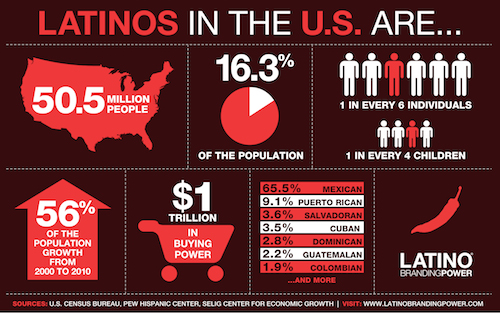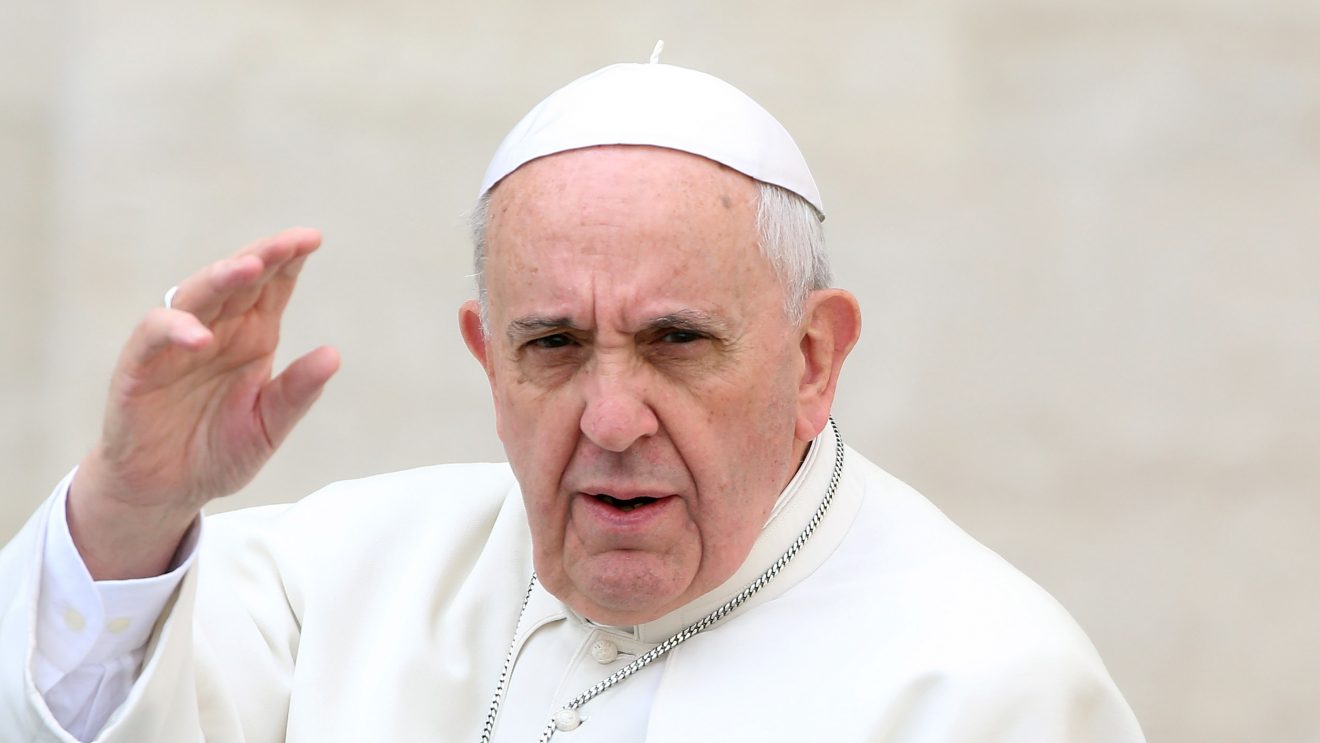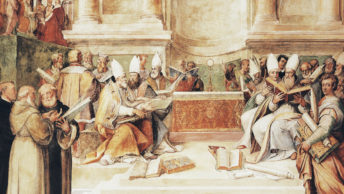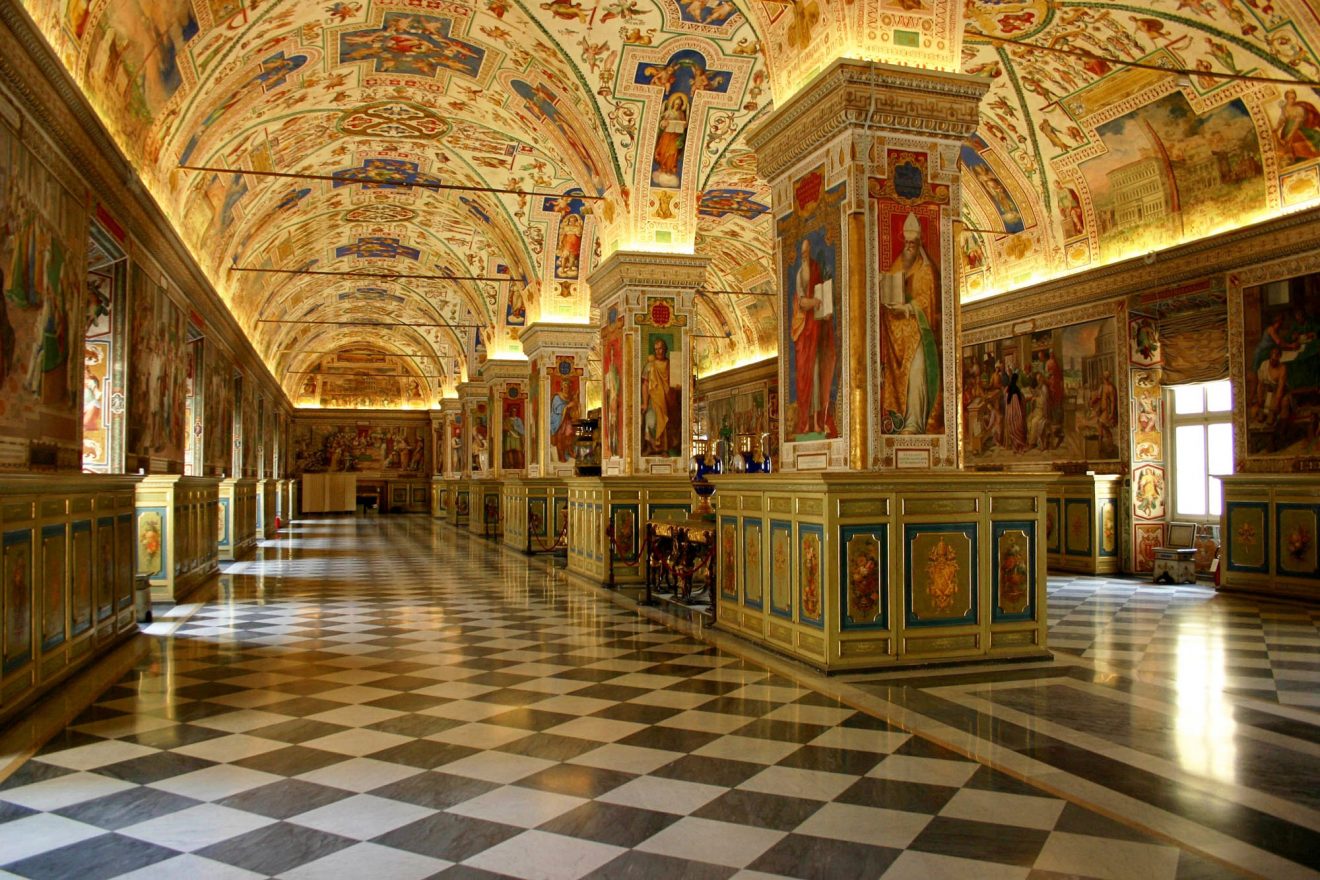When discussing the future of the Catholic Church, understanding and learning more about Hispanic Theology and its different historical context can be a very stimulating experience for every Catholic. And now – more than ever – also constitutes an extremely relevant time to learn more. The 2010 census indicated that about 1 in 6 Americans are Latino and between 2000 and 2010 alone the Hispanic community grew by 43%, accounting for more than half of the nation’s total population increase of 27.3 million. (1) Especially noteworthy: nearly half of U.S. Catholics under the age of 40 are Latinos. (2) It has been projected that by 2050, almost one third of total population will be Hispanic. (3)
Hispanic Theology is pre-Tridentate in the sense that it was never influenced by the Council of Trent (1545-1563) in the way that today’s Anglo-American Catholic Church was – and still is – shaped by the Council. The conquistadors had left Europe before the Council happened and later efforts to influence the Hispanic Church in the same fashion on the Iberian Peninsula and in Latin America remained relatively unsuccessful. Roberto S. Goizueta, a distinguished theologian at Boston College, for instance, notes in a 2004 Theological Studies article that the Council of Trent attempted to intellectualize and rationalize the Church in a response to Luther in a movement called “Counter-Reformation”. (4) Goizueta regrets however that during this development the Catholic Church lost a lot of its expressiveness and devotional dimension in its everyday ministry. He argues that this is very much different in the pre-Columbian Latino Church that is not a product of 19th century European immigrant experience but instead representing a more vivid, lively and “pre-rational” (although not irrational) approach to Catholicism. This particular historical context is important to grasp because some people could potentially regard Hispanic Ministry with its love for music, symbols, devotion and more “Baroque-like character” as infantile or regressive – which would not be a fair assessment.
In a book called Parish Ministry in Hispanic Community, author Charles Dahm describes the parish Pius V in Chicago and illustrates that community truly is the heart of the church for Latinos. Through many concrete examples, he is capable of providing the reader a very good overview of what Hispanic Catholicism is all about. The book reveals that for many Latino Catholics the community on the parish-level is often considered more important than dogma; i.e. doctrine comes before dogma for a lot of Latinos. They tend to proclaim the Gospel in its pure form emphasizing God’s unconditional love for everyone and are less focused on issues that are ideologically driven and could potentially divide people. The parishes hence serve as community centers, places to go for legal advice, counseling, food and shelter. They find God in lo cotidiano and understand that this is where God presides – acknowledging the presence of the divine in all human affairs.
At Georgetown University, every student is required to take at least two Theology courses regardless of one’s major. This semester I took a course called Latino Church Doing Justice, taught by Father Charles Gonzalez, a Jesuit priest and professor. As part of this course, our class went on a community service trip to Camden, New Jersey – America’s poorest and most dangerous city, where many Latinos live. During this weekend class trip, we were fortunate to witness the special form of Hispanic ministry, devotion and celebration. The masses were full of people and energy and served as a great rallying point for the entire Camden community – in a way that one could probably not find in Georgetown’s local Holy Trinity parish in Washington, DC, or in my local parish at home in Germany.
Expressive customs, symbols, saints, singing and devotion thus play a larger role than in the Irish-American Catholic Church which unfortunately tends to be less communitarian nowadays. Finding a way to integrate both of these forms of ministry and Catholicism that exist in the US could create a truly “American” and above all, a “fuller, more inclusive church.” As the first Latin American to ascend to the papacy, Pope Francis could mark the beginning of such an integration process.

Notes:
(1) U.S. Census Press Release (May 26, 2011): “2010 Census Shows Nation’s Hispanic Population Grew Four Times Faster Than Total U.S. Population,” http://www.census.gov/newsroom/releases/archives/2010_census/cb11-cn146.html (accessed December 2, 2013).
(2) Pew Research Center, “U.S. Catholics: Key Data from Pew Research,” http://www.pewresearch.org/key-data-points/u-s-catholics-key-data-from-pew-research/#popsize (accessed, December 2, 2013).
(3) Haya El Nasser, “U.S. Hispanic population to triple by 2050,” USA Today, February 12, 2008, http://usatoday30.usatoday.com/news/nation/2008-02-11-population-study_N.htm (accessed December 2, 2013).
(4) Roberto S. Goizueta, “The Symbolic Realism of U.S. Latino/a Popular Catholicism,” Theological Studies Vol. 65, No. 2 (Marquette University, Milwaukee, WI), 256.







